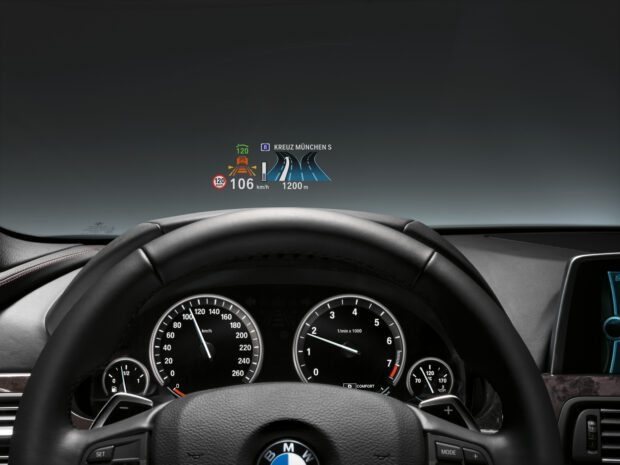Heads-up displays (HUDs) could be a viable option to prevent driver distractions from other onboard technologies like dashboard and center information displays (CID), according to emerging technologies research provider IDTechEx.
Currently, most drivers must deviate their gaze from the road to glance at onboard diagnostics on the dashboard or at the navigation, radio and telephone options on the CID.
With a heads-up display, the information is projected directly to the driver’s line of sight.
The new IDTechEx report, “Automotive Heads-up Displays 2024-2034: Technologies, Players, Opportunities” covers two- and three-dimensional imaging techniques, as well as key trends, market analysis, opportunities and granular 10-year forecasts for display volume (number of displays) and value in U.S. dollars, segmenting the industry by display type and technology.
Heads-up displays are actively used in the aviation industry, IDTechEx noted, highlighting their potential to assist drivers on the road.
Three types of heads-up displays currently exist: dedicated combiner, windshield and augmented reality (AR) HUDs.
The combiner HUD involves projecting an image to a screen between the driver and the windshield, IDTechEx explained.
The virtual image is still directed at the driver’s line of sight, but it is often retractable and does not interfere with the windshield’s visibility.
The windshield and AR-HUD both have virtual images projected at the windshield and require special coatings to prevent image doubling or ghosting effects.
These two types of HUDs are expected to be more immersive, highlighting key obstacles on the road as well as on-board diagnostics (OBD), the report noted.
The technology can be useful in adverse weather conditions where road visibility is reduced, signalling important obstacles and areas of concern.
One concern with the technology is the moderation in the number of images and how immersive the technology must be, the technology research provider said.
“Too many annotations may be detrimental to a driver’s focus on the road,” the report stated.
In addition, too many virtual images could also significantly hinder visibility of the road.
IDTechEx’s “Automotive Heads-up Displays 2024-2034: Technologies, Players, Opportunities” report analyzes the main technologies and HUD types being developed and expected to grow over the next decade.
The challenge in developing automotive HUDs is more than just ensuring the technology works accordingly; it must comply with stringent regulations, the report noted.





















 Unpacking a Consumer Intervenor’s Novel Idea
Unpacking a Consumer Intervenor’s Novel Idea  AIG Partners With Amwins, Blackstone to Launch Lloyd’s Syndicate Using Palantir
AIG Partners With Amwins, Blackstone to Launch Lloyd’s Syndicate Using Palantir  A Practical Blueprint: The Five Plays of an Innovation Culture
A Practical Blueprint: The Five Plays of an Innovation Culture  How Carriers Are Pairing AI and Process Discipline to Drive Subrogation Outcomes
How Carriers Are Pairing AI and Process Discipline to Drive Subrogation Outcomes 



